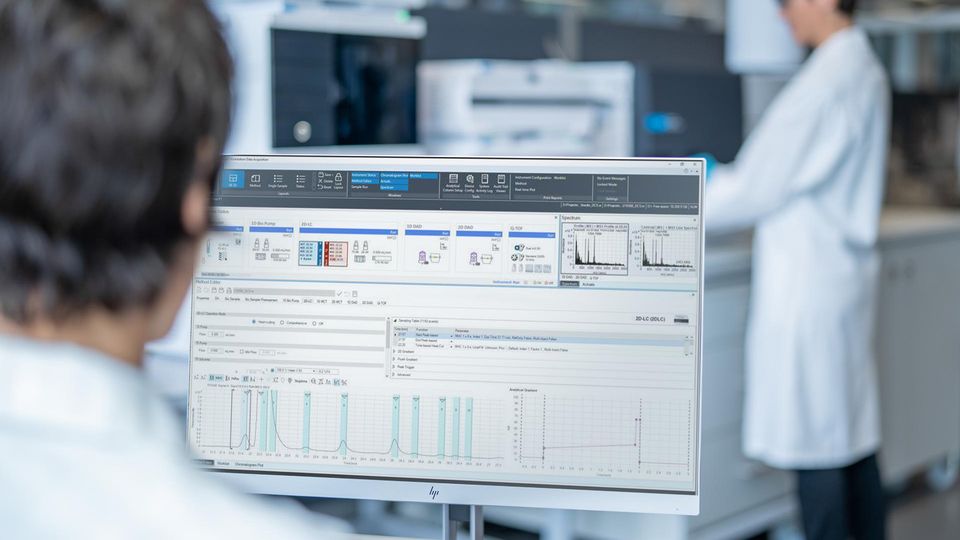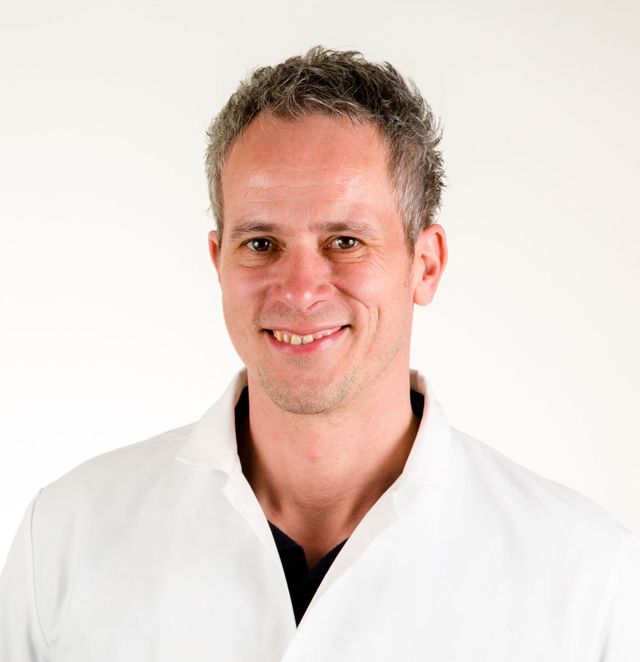Add Another Dimension for Analytical Intention
The evolution of 2D-LC is seeing the technique fulfilling important roles in industry as well as academia

Complete the form below to unlock access to ALL audio articles.
As a principal scientist in R&D, I have a versatile range of tasks from project management to the pure research in relation to novel separation workflow solutions. It includes close customer collaboration both with academic and industrial partners, education in separation techniques and applications and internal coaching and mentoring.
For the last 10 years, my primary focus has been on the development of a two-dimensional liquid chromatography (2D-LC) solution – a global project involving a cross-functional team of engineers and scientists.
A solution for more complex samples
Liquid chromatography (LC) is used to separate mixtures of compounds. It plays a crucial role in the analysis of nutritional products, chemicals, samples from the environment and the life sciences.
Difficult-to-resolve samples, for instance due to their complexity or the similarity of the components, require an extra portion of separation power; this is where 2D-LC enters the laboratory.
Aliquots (or cuts) of the effluent from the first dimensional (1D) separation are sampled and transferred in an online fashion into a second dimension (2D) for further analysis under complementary separation conditions. The reduced complexity of the sample(s) analyzed in 2D and the difference in selectivity between 1D and 2D can considerably enhance the overall resolution.
In general, there are two operational modes in 2D-LC:
- The heart cutting (HC) technique further investigates specific 1D targets and is more important in the analysis of pharmaceuticals and biologics.
- Comprehensive 2D-LC has a second look at everything eluting from the 1D column. It is predominantly used to analyze mixtures of high complexity as found in omics-type applications, natural products or the analysis of polymers.
The evolution of 2D-LC
Almost an exclusively academic tool in the past, our customer database indicates that today, most 2D-LC systems go into industry. The majority of users are in the pharma, biopharma, chemical, applied and food markets. A large contingent of these systems use mass spectrometry (MS) as the 2D-detector.
This is corroborated by a recent review,1 which reported that more than a third of over 200 2D-LC-related articles published within the last 4 years were co-authored by people working in industry – despite publishing being less common among industry peers.
The reasons for this trend were attributed to the progress in 2D-LC-specific technology and the maturity in respect to usability and robustness. Increased adoption leads to a continual growth of the 2D-community accompanied by ongoing exchange of ideas and experience.
The combination of dimensions can be further exploited to obtain related information, determine multiple attributes of a molecule in a single run or even to perform intermediate analyte transformation. Prime examples are the correlation of chemical composition with molecular weight distribution in polymers,2 the determination of titer, charge states and/or aggregation of monoclonal antibodies3 or the online reduction and/or digestion of proteins between 1D and 2D.4
Milestones in 2D-LC technology
It was the pioneering work of leading lights in academia, such as Peter Carr, Peter Schoenmakers and Dwight Stoll, to name just a few, that laid the basis of what can be offered as commercial products today. It is the continued investigations into the fundamentals that are of immense value for vendors to advance understanding and improve their technology.
The availability of commercial 2D-LC systems was the breakthrough for acceptance in industry. I would highlight three important milestones that occurred during the past decade:
First, in 2014, the introduction of the multiple heart-cutting, or MHC solution.5 MHC extends the scope of applicability of HC 2D-LC because many more 1D regions can be targeted in a single run. One of my favorite applications of MHC 2D-LC-MS is the characterization of related impurities in a biopharmaceutical.6 The original high performance liquid chromatography (HPLC) method used a salt-containing mobile phase. Thirteen targets were re-analyzed in 2D under MS-friendly conditions. On top of desalting, we were able to separate co-eluting isomers and reduce the analysis time compared to previously used offline procedures from about two days to just over an hour.
Secondly, it was essential to address a major obstacle in 2D-LC. The solvent mismatch between 1D and 2D, which can now be mitigated using the active solvent modulation, or ASM technology, as reported in 2017.7 In the quantitative analysis of additives in polymers, we re-analyzed aliquots from a 1D separation operated with a 100% tetrahydrofuran mobile phase – conditions not favorable for the reversed-phase column used in 2D. ASM eliminated analyte break-through in 2D, and excellent peak shapes and linearities for bisphenols were obtained.2
Finally, due to 2D-LC being more complicated than 1D-LC, its successful use stands and falls with a 2D-LC-dedicated software providing intuitive user assistance for method setup, development and data analysis. Ours evolved over the course of more than 10 years and involved collaborations with customers in the very early stages. Their willingness to share knowledge was the key for a product that I think better matches the reality of the needs in the field.
Perfecting the 2D-LC set-up
Of course, the perfect set-up really depends on your use of the 2D-LC system, but my recommendation is to employ hardware that enables you to be as flexible as possible.
I have in general MHC with ASM, a 1D-detector prior to this interface and a diverter valve installed between the second dimension and the MS. Thus, I am equipped to tackle almost any analytical task. MHC can cover all 2D-LC operational modes, ASM moderates solvent mismatch effects and the diverter sends the salt content of 2D cuts into waste before switching the 2D flow towards the MS. With the 1D-detector, I can make use of both 1D and 2D results and its online signal can trigger decisions when to sample from 1D.
It can be beneficial to set up systems to optimize the duty cycle. Many labs utilizing multi-dimensions have dedicated systems, but for other labs, a second dimension is not always required. Operating a 2D-LC system in 1D mode means that half of the system is being unexploited. A resourceful idea was to configure two 1D-LC systems (normally operated individually) in such a way that, alternatively, they can be combined into one 2D-LC system simply by temporarily replacing one autosampler (that of the 2D system to be) with the 2D-LC interface.
A 2D-dedicated method development tool could round up the application. There is a lot of ongoing work in this area, including the use of retention models and Bayesian optimization for complex samples to reduce the number of trial-and-error experiments. What works for me with intermediate complex samples, is to use generic methods to screen conditions in a 1D-LC format and then connect settings that look promising to work in combination. Moreover, a wealth of readily accessible material exists to support the obtainment of starting conditions for a vast variety of applications (e.g., https://www.multidlc.org/).
Recent efforts to bring 2D-LC to the forefront
All the larger instrument vendors offer multi-dimensional technology, which underlines the common understanding that 2D-LC offers resolution for samples that are generally becoming more difficult to analyze. Indeed, it is becoming a widely adopted technique as is substantiated when attending technological conferences in the field such as the recent HPLC 2023. It is also clear that the scientific community will probably not stop at 2D.
The technology has matured, and to demonstrate its superiority in an applicative manner, it is very satisfying to work with industrial partners. I consider this a win–win situation as I can help coach and guide, while learning about real-world issues with the technology. This kind of collaboration has resulted in the development of software features that improve the robustness of 2D-LC methods used in the analysis of large molecules.8
University relations offers programs such as the Thought Leader Award, granted to Prof. Dwight Stoll of the Gustavus Adolphus College in Saint Peter, Minnesota, in 2016. The award funded a project to investigate the role of 2D-LC in biopharmaceutical analyses involving contributions from several researchers in academia and industry;9 note the temporal correlation of the release of the ASM technology. A personal highlight this year was the same award going to Prof. Peter Neubauer at the Technical University Berlin.10 His goal is to orchestrate hard- and software, automation, mathematical models and AI to discover optimal conditions for process analytical technology (PAT) workflows. I am looking forward to watching this project unfold over the next few years.
This highlights the benefit of the combined efforts of working with industrial partners and university relations, alongside our own R&D efforts to drive academic research innovations to advance analytical solutions. It is exciting to see the ongoing progress being made in the field of 2D-LC-MS, and I look forward to seeing more innovative projects in the future.
1. van den Hurk R, Pursch P, Stoll D R, Pirok B. Recent trends in two-dimensional liquid chromatography. J. TrAC Anal Chem. 2023;166:117166. doi:10.1016/j.trac.2023.117166
2. Pursch M, Wegener A, Buckenmaier S. Evaluation of active solvent modulation to enhance two-dimensional liquid chromatography for target analysis in polymeric matrices. J. Chrom. A, 2018;1562:78-86. doi:10.1016/j.chroma.2018.05.059
3. Verscheure L, Vanhoenacker G, Schneider S, Merchiers T, Storms J, Sandra P, et al. 3D-LC-MS with 2D multimethod option for fully automated assessment of multiple attributes of monoclonal antibodies directly from cell culture supernatants. Anal. Chem. 2022;94(17):6502–6511. doi:10.1021/acs.analchem.1c05461
4. Gstöttner C, Klemm D, Haberger M, Bathke A, Wegele H, Bell C, et al. Fast and automated characterization of antibody variants with 4D HPLC/MS. Anal. Chem. 2018;90(3): 2119–2125. doi:10.1021/acs.analchem.7b04372
5. Pursch M, Buckenmaier S. Loop-based multiple heart-cutting two-dimensional liquid chromatography for target analysis in complex matrices. Anal. Chem. 2015;87(10):5310-5317. doi:10.1021/acs.analchem.5b00492
6. Petersson P, Haselmann K, Buckenmaier S. Multiple heart-cutting two dimensional liquid chromatography mass spectrometry: Towards real time determination of related impurities of bio-pharmaceuticals in salt based separation methods. J. Chrom. A. 2016;1468: 95-101. doi:10.1016/j.chroma.2016.09.023
7. Stoll D, Shoykhet K, Petersson P, Buckenmaier S. Active solvent modulation: A valve-based approach to improve separation compatibility in two-dimensional liquid chromatography. Anal. Chem. 2017;89(17):9260–9267. doi:10.1021/acs.analchem.7b02046
8. Buckenmaier S, Petersson P. Analysis of peptide/protein*-related impurities using Bio 2D-LC/Q-TOF, Technical Overview, Agilent Technologies 5994-4743EN 2022. Accessed November 27, 2023. https://www.agilent.com/cs/library/technicaloverviews/public/technical-overview-peptide-protein-impurities-masshunter-software-5994-4743en-agilent.pdf
9. Agilent Technologies presents thought leader award to Professor Dwight Stoll for separation science research. agilent.com/. Published April 18, 2017. Accessed November 27, 2023. https://www.agilent.com/about/newsroom/presrel/2017/19apr-ca17012.html
10. Agilent announces thought leader award to Peter Neubauer. agilent.com/. Published August 3, 2023. Accessed November 27, 2023. https://www.agilent.com/about/newsroom/presrel/2023/03aug-ca23031.html
Stephan Buckenmaier, PhD, Principal Scientist in R&D, Agilent Technologies

Stephan has worked in the field of separation sciences for well over 20 years. He joined Agilent in 2006 and is currently a principal scientist in R&D at Waldbronn, Germany, for their liquid phase separation division.
Prior to joining Agilent, Stephan was a postdoctoral researcher in the Proteome Center of the University of Tübingen (Germany), where he studied diagnostic proteins and post‐translational modifications. He received his PhD from the University of the West of England (Bristol, UK) in 2004, where he investigated factors influencing retention and peak shape in HPLC.

